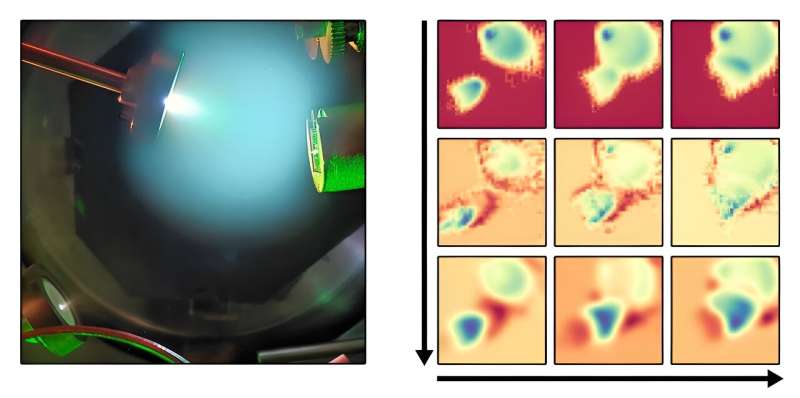
September 16, 2024 by Scott Gibson, Oak Ridge National Laboratory
Collected at: https://phys.org/news/2024-09-ai-plasma-plume-analysis.html
In a published in the journal npj Computational Materials, Oak Ridge National Laboratory scientists developed a deep learning model—a type of artificial intelligence that mimics human brain function—to analyze high-speed videos of plasma plumes during a process called pulsed laser deposition, or PLD.
The PLD technique uses powerful laser pulses to vaporize a target material, creating a cloud-like stream of atoms and particles—the plasma plume—which then settles onto a target surface to form ultrathin films. This method is crucial for creating advanced materials used in electronics and energy technologies.
“We’ve taught AI to do what expert scientists have always done intuitively—assess the plasma plume to check if the color, shape, size and brightness look the same as they did the last time a good sample was made,” said ORNL’s Sumner Harris, the lead author of the study. “This not only automates quality control but also reveals unexpected insights into how these microscopic particles behave during film formation.”
This innovation builds on ORNL’s previous development of an autonomous PLD system that accelerates materials discovery tenfold, promising to transform materials synthesis monitoring and further streamline the creation of next-generation materials.
More information: Sumner B. Harris et al, Deep learning with plasma plume image sequences for anomaly detection and prediction of growth kinetics during pulsed laser deposition, npj Computational Materials (2024). DOI: 10.1038/s41524-024-01275-w
Journal information: npj Computational Materials

Leave a Reply